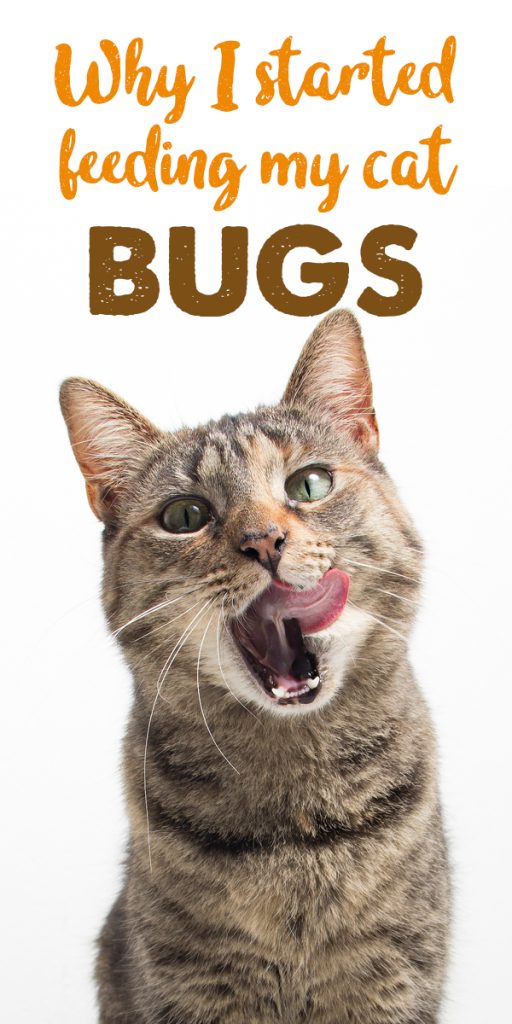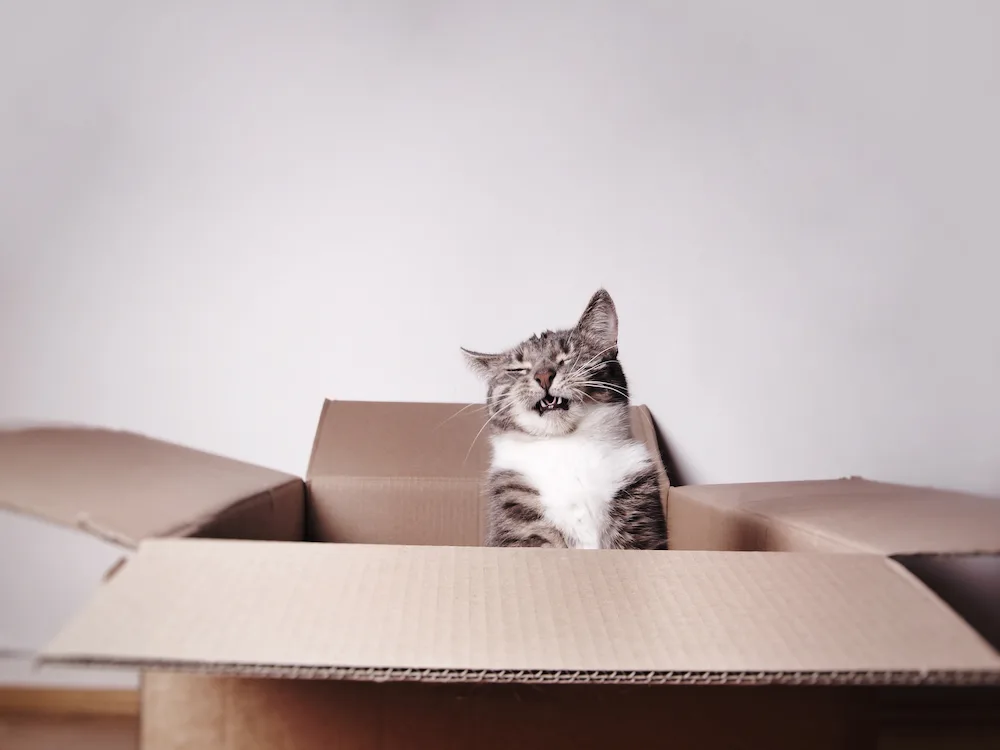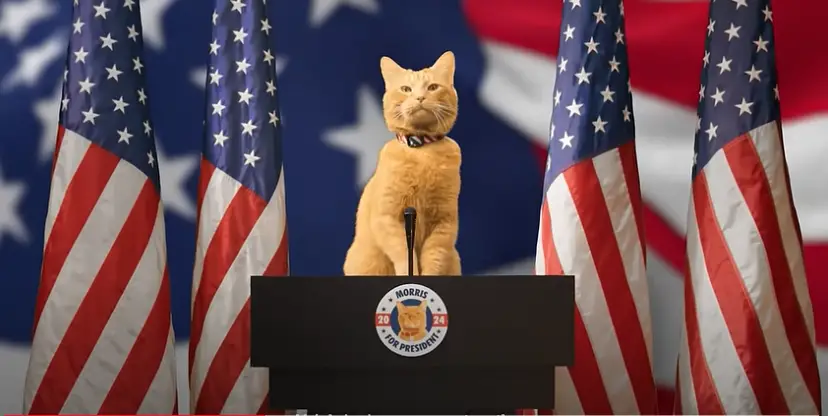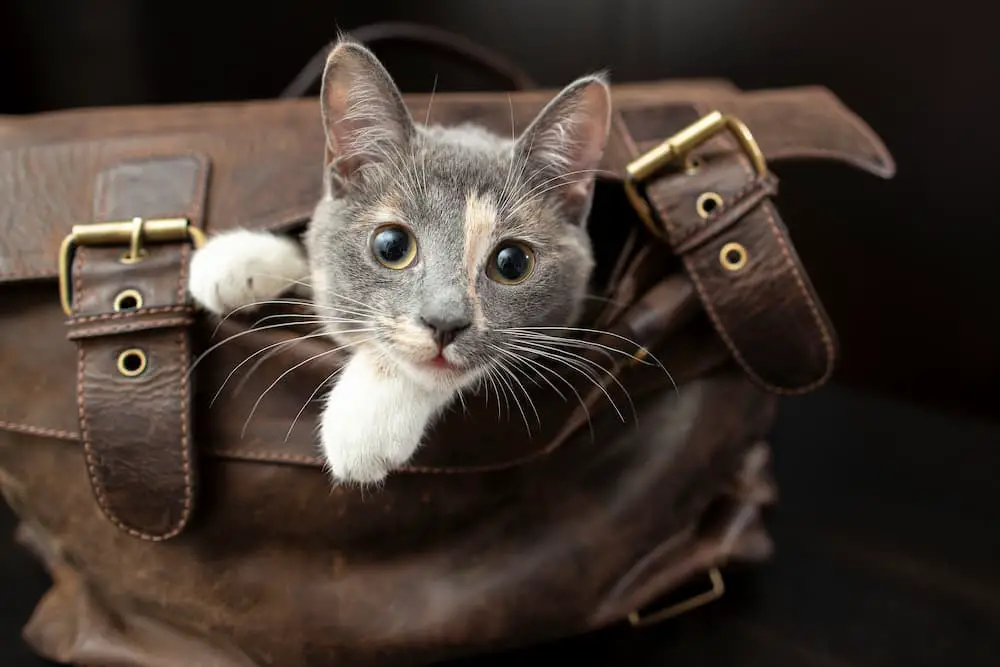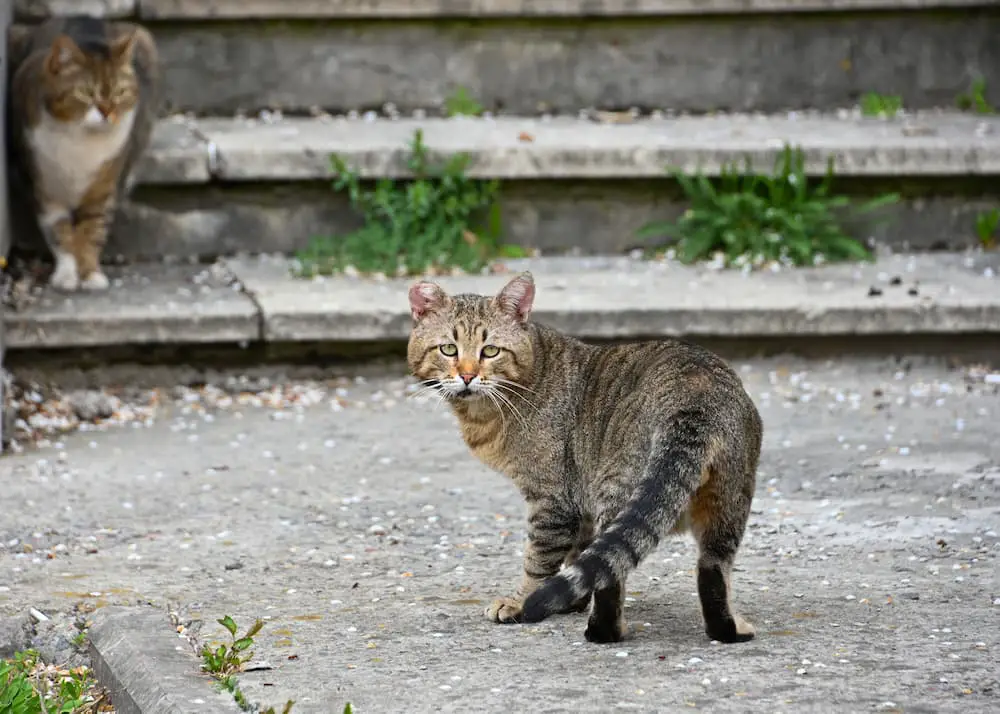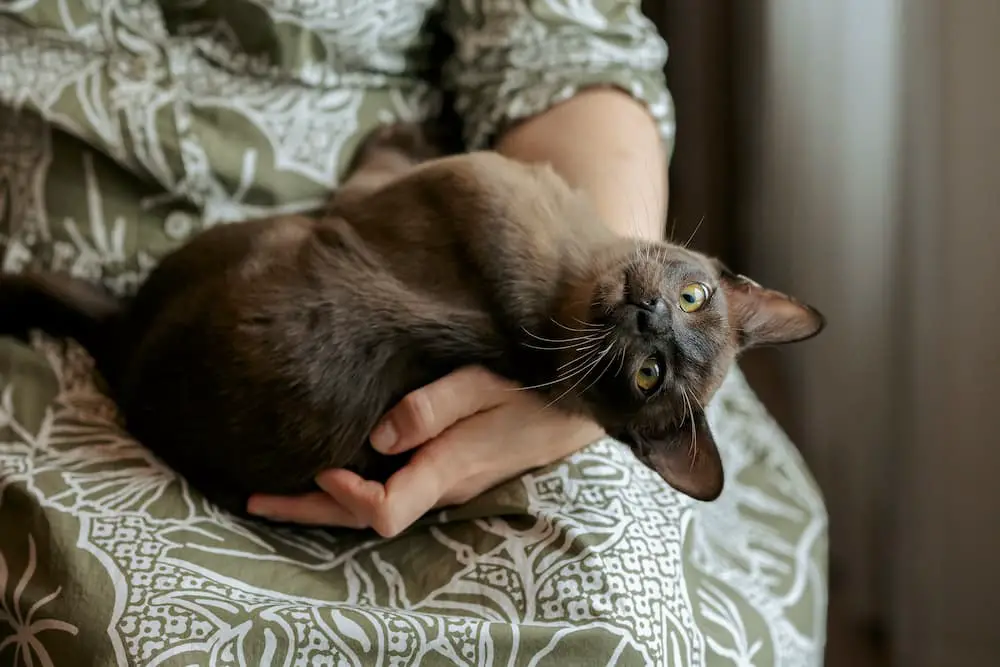A few months ago, I started feeding my cat bugs—and it was the best decision I ever made for her. Here’s why!

By Brandy Arnold, Editor, The Catington Post
About six months ago, I pulled into my driveway and put the car in park. It had been raining pretty heavily and, as I started gathering my things to make a quick sprint to the safety of my covered porch, I noticed a particularly straggly tortie cat riding out the rainstorm huddled under one of my rattan chairs.
As I approached her, she tensed up, likely weighing the odds of which scenario was worse — leaving the safety of the dry porch to find another place to hide from the rain or encountering the strange, wet human with all the scary shopping bags and jingling keys coming toward her.
Not wanting to scare her into the rain, I avoided eye contact and quickly made my way inside. I didn’t get a good look at her, other than noticing the tip of one ear had been clipped, indicating she wasn’t a lost pet, but a community cat; a stray that had been TNR’d, or trapped, neutered/spayed, and then released back into the neighborhood. A few minutes later, I opened the front door and quietly slipped a bowl of kibble onto the porch for her.
I watched through a window as she slowly crept over to the bowl, sniffed, and then began scarfing mouthfuls of food as if she hadn’t had a meal in days. And, by the looks of her, there was a good chance she hadn’t had a real, healthy meal in a very long time.
She was skinny but had an enormous belly. Since she was spayed, I guessed it was likely parasites from eating whatever scraps of food she’d been able to find on the streets. For the next couple of weeks, she continued to hang around my porch and I continued to feed her. Although she still wasn’t ready for chin scratches, I was eventually able to give her a few gentle pets while she ate, and managed to slip a dewormer into her dinner without her noticing.
And, when I was finally able, she wasn’t thrilled about it, but I nudged her into a carrier and took her to my vet to be scanned for a microchip. Sadly, there wasn’t one. And, despite her being friendly and young, overpopulation meant no shelters in the area would take in a cat that’s been TNR’d. I was told the best option, since I couldn’t adopt her myself (I’m a renter and already at max pet capacity), was to release her back into the neighborhood.
I knew what bringing her back to my house and continuing to feed her would mean. It would mean that I had a new cat, even if she lived outside. So, determined to give her the best life possible, I bought an insulated cat house, a self-warming bed, a set of food and water dishes… the works. Within another couple of weeks, she was my new front porch bestie, greeting me with a big meow every morning when I opened the door, following me to the mailbox, and climbing onto my lap whenever I sat on the porch chair.
Earlier in 2021, Suni Lee had won gold in the women’s all-around gymnastics at the Olympic Games and this cat had such an impressive assortment of acrobatics when she wanted attention (or dinner), that I started calling her Suni in tribute.
I’d recently received a couple of sample bags of a new premium cat food called Catit Nuna to try. The food is primarily made using insect protein which, admittedly, gave me pause. But, I couldn’t ignore the many benefits it offered — omega 3 and 6 for a healthy skin and coat, taurine for eye and heart health, fiber for digestion, a low glycemic index for graceful aging. All this, plus, it was made from insect protein which creates far less impact on the environment than traditional meat protein.
A lot of pet foods make impressive claims, but I had the perfect opportunity with Suni to test Catit Nuna’s claims for myself.
From the very first bowl, I knew Catit’s assertion that Nuna tasted great was a fact. I’d been feeding her regularly for close to a month already, but I’d never seen her devour a meal with so much excitement. She loved it, there was no doubt about that.
Over the next couple months of feeding Catit Nuna, I noticed Suni’s body changed from the awkwardly skinny body with a big, round belly to a normal, healthy body shape. Her coat, which months earlier had been dry and felt dirty to the touch, became shiny and soft. She just looks and acts healthy and happy now.
The changes in Suni’s health were so profound and unexpected that I switched my other cat’s food to Catit Nuna, too. I feel great knowing that not only am I providing my cats with superior nutrition by, yes, feeding them bugs, I’m playing an important part in lowering my carbon footprint and preserving the planet for future generations of cats to enjoy.
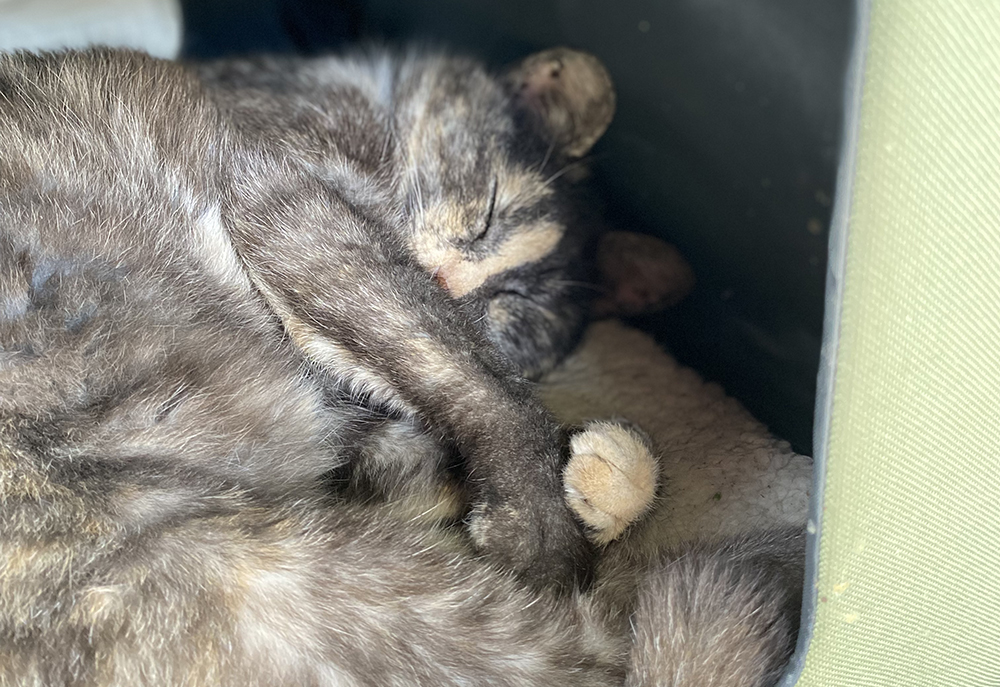
If you’re a cat owner, one of your biggest priorities is making sure your kitty eats right. But what if the food you’re feeding them is damaging the environment and their health? Luckily, there’s a new cat food on the market that’s not only good for your feline friend but for the planet as well.
Did you know that traditional meat production creates more carbon emissions than cars do? Turns out there’s a better way to feed your furry friend. Cat food made from insect protein is a healthy and sustainable alternative to traditional pet food, and it’s perfect for eco-conscious animal lovers who want to do their part in protecting the planet.
Introducing Catit Nuna! Premium cat food that sets a new standard in sustainability – and can conveniently be shipped to your door. With 500 million cats on our planet, we can make a real difference — truly reduce your carbon pawprint — by just substituting meat protein with insect protein.
Feeding insect protein is a complete, clean, sustainable alternative to meat protein
Is your cat a meat-eater? If you’re like most cat owners, you’re probably feeding your kitty some form of a meat diet. But there’s a problem with meat — it’s not sustainable. What if there was an alternative to meat protein that was both clean, healthy, and sustainable? Read on to learn more:
How bad is meat production and processing for the environment? These statistics are going to shock you
- Livestock and poultry raised for consumption account for 14.5% of greenhouse gas emissions.
- The amount of water required for meat production in just 35 hours could provide enough drinking water for everyone on earth for a full year.
- Livestock and poultry raised for consumption generate 13 billion tons of waste every year.
- A 2009 study found that four-fifths of the deforestation across the Amazon rainforest could be linked to cattle ranching, in large part for beef production.
How is insect protein better for the environment? You’re going to love this!
Catit Nuna is made with Hermetia Illucens larvae (Black soldier fly grubs!), but don’t worry, they’re dried and ground into a fine powder so you’ll never actually see a bug while feeding — to your cat’s dismay! So, what makes insect protein so much better than meat when it comes to the environment?
- 100% of the grub is used, none of it is wasted or ends up in landfills, unlike beef (60% inedible) and chicken (45% inedible) which end up in landfills to decompose and continue producing greenhouse gasses.
- About half of the habitable land on the planet is used for raising meat for consumption and most of the world’s food crops are grown to feed those animals. Grubs require a tiny fraction of the land and resources needed to raise meat. Catit Nuna’s grubs are farmed vertically to reduce land use and require hardly any water.
- Catit Nuna grubs only feed on unconsumed human-grade fruits and vegetables that would otherwise go to waste.
Yes, the environment is important, but so is your cat’s health
We love Planet Earth, but we are cat parents through and through. We wouldn’t feed Nuna to our furriest friends if it wasn’t chock-full of the exact nutrients they need to keep them healthy. They are obligate carnivores, after all, and require a protein-rich diet. Catit Nuna contains up to 92% sustainable protein, which is a perfect alternative to unsustainable meat-based cat food.
It far exceeds beef and chicken in terms of protein, in fact. Hermetia Illucens larvae: 100 grams of Nuna grubs contains 60 grams of protein (100g of beef has 19.4, chicken has 19.5).
Catit Nuna grubs outperform meat when it comes to other nutrients, too: 30mg of iron (beef has 2mg, chicken has 0.9mg), and 1,900mg of calcium (beef 12, chicken 14).
Catit Nuna also provides Taurine, essential for cats’ vision and heart muscle function, Omega 3 & 6 for healthy skin and coat, and minerals and vitamins that promote heart health and protect muscles and bones. It’s 100% free of antibiotics and growth hormones. And, if you’ve got a kitty with a sensitive tummy, don’t worry. Catit Nuna is low carb, gluten-free, and doesn’t contain corn, soy, rice, or wheat.
Eating insects isn’t all that odd, especially for your cat!
In many cultures around the world, insects are common menu items for their healthy nutrition, sustainability, and, yes, for their taste, too.
Cats regularly seek out insects as a part of their natural diet. You’ve probably seen your cat hunt an unlucky insect that found its way inside! We know they enjoy the hunt and the chase, but you might not have realized that the bugs they eat are full of benefits, too, just like Catit Nuna.
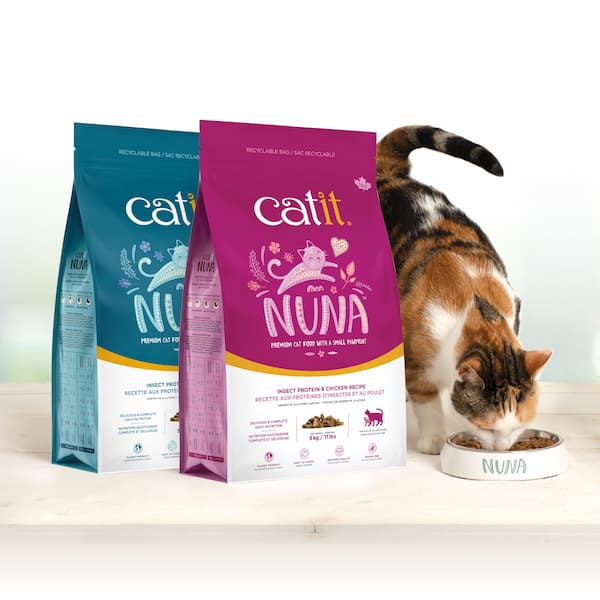
The larvae of the Hermetia Illucens fly is known around the world as a beneficial superfood because it’s packed with great nutritional properties. And, Catit Nuna grubs are sustainably raised in Canada, the USA, and Europe, under very clean and controlled conditions.
Ready to give grubs a try? Your cat will love it!
In addition to saving land, conserving water, reducing carbon emissions, and upcycling resources, Catit Nuna provides complete and exceptional nutrition to your cat, in a taste they’ll love. If you want to help reduce your cat’s carbon pawprint, consider feeding Catit Nuna!
Catit Nuna is available in two delicious varieties – Insect Protein & Chicken Recipe or Insect Protein & Herring Recipe — to satisfy your feline’s discerning palate. Subscribe and save 10% by having your cat’s food shipped automatically every week, 2 weeks, or monthly. Free shipping on orders in the contiguous United States over $40. Cancel anytime.
Share this with your friends! Pin it!
